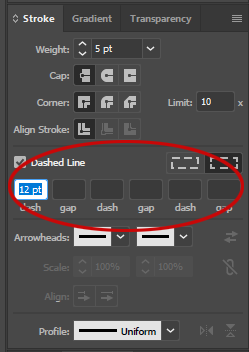

- Creating a dashed lineweight in rhino for mac update#
- Creating a dashed lineweight in rhino for mac software#
Rhino supports a few modes of modeling: Curves, Surfaces, Solids, and Meshes. and that’s not so far off form a very traditional architectural presentation style. Specifically, the table, and chairs, can be modeled quite accurately… as you can establish a scale for the drawing, and get some measurements for how tall the table might be,… or how thick the table legs are… and stuff like that.Īdd in some walls, and you could have a nice combination of a 3D workshop, with some furniture… and of course some 2D people to help fill out the space.

and supporting it with other commands like Trim…, Join…, Extend…, and CurveBoolean. and manually trace over these figures yourself by using the Curves command. So I’m guessing you’re just starting to experiment with the software… and if so,… then I think there is a good opportunity to build up and polish a few skills. I’m not sure how many commands you already know in Rhino. In the example, I put the lines to laser cut on the black layer, so that would be the only layer to export to the laser cutting machine.Well, I am tryin’ to learn something new. But right now, with the University’s facilities, I would like to do it myself too. But recently I chanced upon an amazing Line Art work and he told me he did it via Rhino.
Creating a dashed lineweight in rhino for mac software#
Had been using other software (like SketchUp and Illustrator). If that’s not the case, you could go back and trim off anything that extends beyond the outline (the inelegant part, ha!). Hi all, I am almost completely new to Rhino. With laser-cutting cardboard, I didn’t think this was crucial or a deal-breaker. The sloppy part about this is that some parts of the 1 mm lines extend beyond the outline shape. Repeat with the 2-segment polyline for the interior folds. This distributes the whole number of 1 mm lines evenly along the shape of the star, with a slight variance in the space between the 1 mm lines.
Creating a dashed lineweight in rhino for mac update#
I then change to Number of Objects, and type in the value that Distance Between Objects generated (the tool doesn’t actually update the Number of Objects value with the whole number calculated from the Distance Between Objects option, so that’s why I re-enter the same value that’s already there), and hit Enter. When you enter a value in Distance Between Objects, the Number of Objects updates in the background. I first choose Distance Between Objects and plug in 2 mm. I assumed I wanted the laser to cut a 1 mm line, then a 1 mm gap, then cut the next 1 mm line, etc. It gives the option to choose the number of objects to array or the distance between objects. Not sure if this is necessary, but I like to use it with Array Along Curve. Then save this file as your laser template. Place it on a Table layer and lock the layer as well. Set the print width of this rectangle to No Print and lock it. After a lot of screwing around with this, I’ve come to the conclusion. I’ve tried modifying the various display types. All of the lines continue to print as hairlines. So, I set the Layout Print Width for each layer in each of the details and ran a print. All of the lineweights printed as hairlines. 2013 If you use the dash version of -ViewCaptureToFile. The details use the pen display settings.


I used Array Along Curve to distribute the 1 mm line around the star. Create a laser template in Rhino by opening a blank file and drawing a rectangle the exact size of the cutting table with the origin on the upper left corner. Creating-an-Axonometric-View-in-Rhino.pdf Creating an Axonometric View in Rhino - EPFL Web16 dec. Using Dir to find start point and direction, I drew a 1 mm line from the start, with a Near snap to keep it on the star outline. I drew a star from the polygon tool and a two-segment polyline from the tip of a ray, to the origin, to inside corner between rays. Not sure what you’re making, but I imagined a 5-point star. Admittedly a little inelegant or sloppy, it might fit the bill. Based on your comments, it’s an all-Rhino solution that would be digestible for students. I was intrigued by your topic and wanted to try out an idea.


 0 kommentar(er)
0 kommentar(er)
